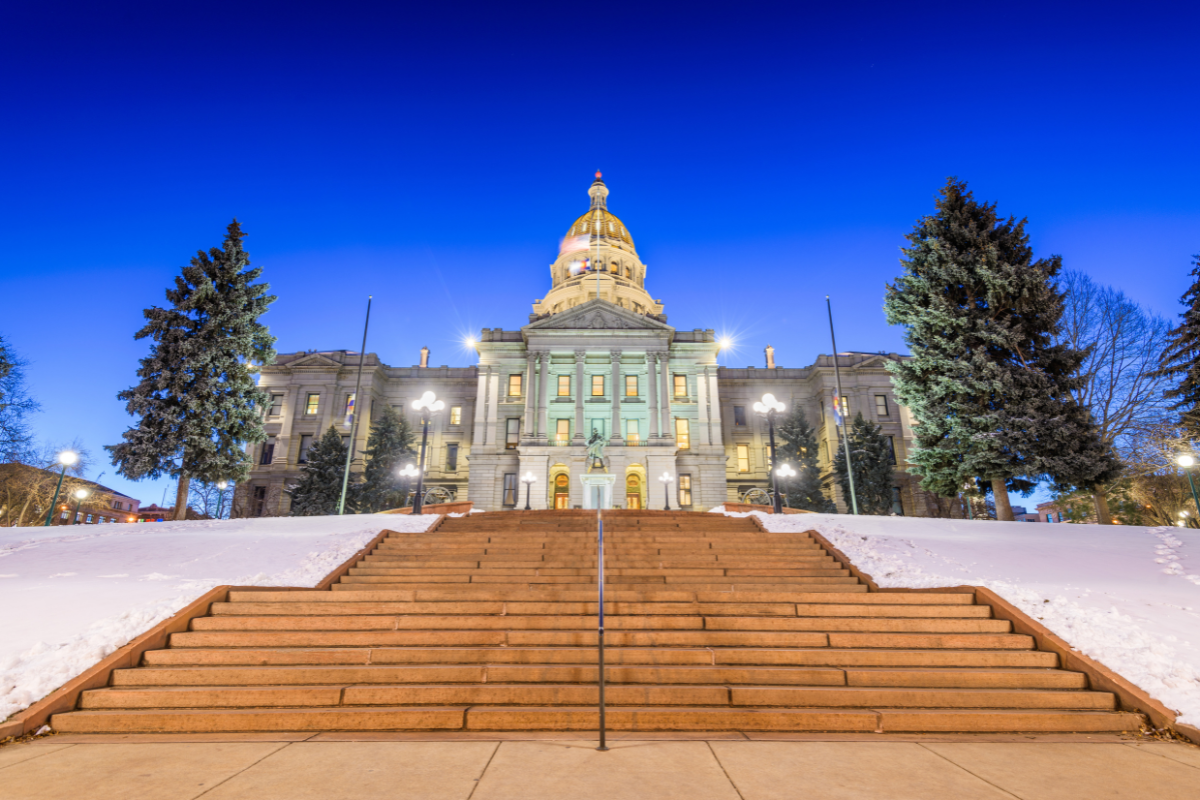
The Circular Action Alliance and Colorado are gearing up to implement the state’s new EPR law. | Sean Pavone/Shutterstock
Editors note: Join us at the 2026 Resource Recycling Conference where we’ll dive deeper into EPR compliance and policy.
The group overseeing Colorado’s upcoming recycling system overhaul is moving forward with new plans to boost participation statewide.
During an Oct. 9 webinar, the Circular Action Alliance (CAA) outlined its education and outreach strategy under Colorado’s extended producer responsibility law. The Producer Responsibility for Statewide Recycling Act requires packaging and paper producers to join the PRO in order to sell products in the state.
Working with existing data and information gathered from more than 1,000 residents in a recent survey, CAA identified barriers to recycling participation and strategies to increase recycling rates. Among them was cost, which factored into a recycling rate of only 16%, according to Colorado’s Department of Public Health and Environment, or about half the national average.
The new EPR law will take funds from manufacturers to establish a free residential recycling system for residents in 2026; plans are to expand access to small businesses by 2030. The goal, organizers say, is to make sure participation is strong once those programs roll out.
“This will help us evaluate the program and give us direction with a campaign strategy,” said Wendy Artman, senior director of GFM/CenterTable, one of the marketing agencies working with CAA on the campaign.
Researchers found that, while Colorado’s natural beauty would motivate action, lack of service and trust in the recycling process keeps many residents skeptical. The CAA reports only about 20% of rural Colorado households for example, have had access to service.
“This new system will overcome old barriers,” Artman said. “People don’t have a good sense about what happens to material after it’s collected.”
The campaign should overcome those barriers, she said. A needs assessment the CAA performed found the additional funding and marketing should:
- Increase the state’s recycling rate to 47-60% by 2035
- Expand curbside recycling to 500,000 new households
- Create 600,000 tons per year of additional capacity for commingled recyclable materials
To achieve this, the RecycleOn Colorado campaign will lean into Colorado’s unique traits while touting recycling’s benefits, according to Julie Colehour, a partner with C+C, another marketing agency that’s part of the effort. When it launches in spring 2026, the campaign will push awareness and understanding of the new recycling program in an attempt to build trust and boost participation.
“The desire here is to get people aware change is coming, get excited about that change and get ready to change their behaviors when we ask them to,” she said. “The idea here is this will be a great umbrella.”
That umbrella is made so that it’s usable in the other states in which CAA operates, including California, Maine, Maryland, Minnesota and Oregon. Ads are targeted to the local market – one in Colorado promotes “free service from Fort Collins to Four Corners” – but are meant to make the RecycleOn campaign a trusted face for recycling.
“If we’re successful, people will want to participate because they know their efforts will count,” Colehour said. “If you have satisfaction, then you form that habit with the consumer.
“This is no switch, but a dial.”
Under the law, manufacturers will begin paying a responsibility fee in January 2026.
More stories about EPR

